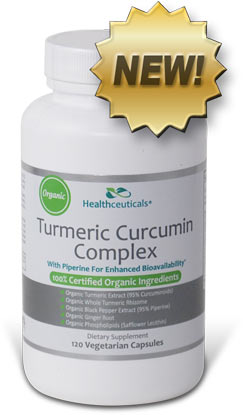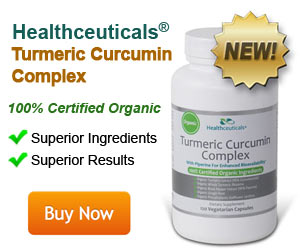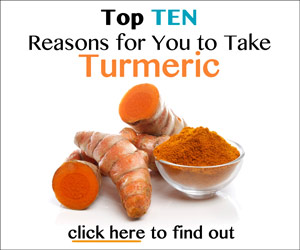Can Turmeric or Curcumin Increase the Risk of Birth Defects or Adverse Side Effects in Nursing Infants?

Results from a number of lab and animal studies found no birth defects or DNA mutations associated with turmeric. In a more recent study, high doses of the turmeric compound curcumin were evaluated for safety in animals spanning over two generations. (i.68, 94)
Results of Two-Generation Toxicology Study
This investigation was conducted according to internationally recognized guidelines for testing substances used by humans for toxic effects on reproduction. Scientists tested both the parents and offspring of each generation for negative side effects caused by curcumin. (i.68, 94)
| MALE | FEMALE | |
|---|---|---|
| 1ST GENERATION | 847 mg/kg of body weight | 1043 mg/kg of body weight |
| 2ND GENERATION | 959 mg/kg of body weight | 1076 mg/kg of body weight |
The only negative side effect reported was a slightly lower weight gain in pups born to the second-generation. This was only found in offspring of rats given the highest doses of curcumin. In 2003, these and other study results were used by the Joint FAO/WHO Expert Committee on Food Additives to set the acceptable daily intake of curcumin. The safe ADI was determined to be 0-3 mg of curcumin per kg of a person's body weight. (i.94)
Effects of Food Coloring Agents on Fetal Health
Since food manufacturers often use curcumin-rich turmeric as a food coloring, scientists conducted a toxicology study in 2011. Specifically, the study was done to determine the effect on fetuses of pregnant rats. They divided the animals into 7 groups, one of which was an untreated control group. The 6 remaining groups received either oral doses of curcumin, or one of two other food colorings (amaranth and sunset yellow). (i.95)
For each of the 3 colorings, one group was given a dosage equal to the FDA's acceptable daily intake. A second group was given the equivalent to 10 times the ADI set by the FDA. After 2 months, the scientists assessed the condition of their livers and kidneys. (i.95)
Mostly Beneficial Effects of Curcumin
Animals given curcumin had lower concentrations of free radicals in the liver compared to the control group. The only negative effect on developing fetuses was found in the group given the higher doses of curcumin. In that group, 3.2% showed growth retardation. Growth restriction in human fetuses is defined as having a weight under the 10th percentile of typical fetal weight. (i.95-96)
Effects of Other Yellow Food Colorings
By contrast, both amaranth and sunset yellow had harmful effects in the liver. Additionally, the researchers found skeletal and organ abnormalities. There were also significantly higher rates of growth retardation (27.8% and 8.3% respectively) than found in the curcumin group. (i.95)
Does Turmeric Pass Into Breast Milk?
Animal studies indicate that metabolites and derivatives of both turmeric and curcumin given to mothers were found in nursing pups. However, there were no negative side effects noted. (i.5, 68, 97)
In fact, both turmeric and curcumin both significantly raised levels of beneficial enzymes in the liver. All of these naturally produced enzymes are detoxifying and potentially cancer-preventive. (i.5, 68, 97)
Join the 1000s of People Who Are Discovering the Benefits of Turmeric.

Healthceuticals® Turmeric Curcumin Complex
100% Certified
Organic ingredients
- Organic Turmeric Extract - standardized to 95% curcuminoids.
- Organic Whole Turmeric - provides full spectrum antioxidant, anti-inflammatory turmeric benefits, including turmerones and numerous vitamins, minerals, and phytonutrients
- Organic Black Pepper Extract - standardized to 95% piperine; dramatically enhances bioavailablity.
- Organic Phospholipids - markedly improve absorption.
- Organic Ginger - works synergistically with turmeric to provide more powerful benefits.
- Absolutely FREE of potentially harmful additives and fillers such as magnesium stearate.




